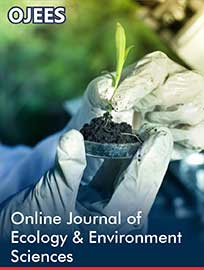 Case Report
Case Report
On the Destruction of Threatened Endemic Insular Bats Roosts: The Case of the Macaronesian Madeira Pipistrelle Pipistrellus maderensis (Mammalia: Chiroptera) On Madeira Archipelago
Teixeira S1,2,3*
1University of Madeira, Faculty of Life Sciences
2EUROBATS Madeira Scientific Focal Point
3Madeira Fauna & Flora
Teixeira S, University of Madeira, Faculty of Life Sciences, Madeira Island, Portugal.
Received Date:November, 13, 2023; Published Date:December 01, 2023
Introduction
The Madeira Pipistrelle Pipistrellus maderensis is a small vespertilionid bat, endemic to the macaronesian archipelagos of Madeira, Azores and the Canary Islands (Teixeira, [1]). The species is threatened of extinction (Alcaldé & Juste, [2]) and is one of the most threatened species of bats in Europe (Barova & Streit, [3]). Madeira pipistrelles metapopulations have become extinct on several islands of the Madeira and Azorean archipelagos, due to posthuman colonization habitat destruction (Teixeira et al, [4]). The population of P. maderensis faces several survival pressures, namely habitat fragmentation, persecution, urban growth and forest fires (Teixeira et al., [5]). Collectively, these pressures exert a significant deleterious effect on P. maderensis populations, their roosts and feeding areas. Tourism led urban growth is a common pressure on urban and sub-urban areas, while persecution affects the species more strongly on rural areas and the forest fires on natural areas. Despite these menaces to the species survival are known, none has been reported thus far, hindering a proper conservation status evaluation under IUCN criteria based on published information (D. Russo, personal observation).
Cases Reported
P. maderensis roosts were located on Madeira and Porto Santo Islands and were all located on anthropogenic structures, in different types of soil occupation and distances from urban areas (Table 1). The roosts Galhano and Ribeira Seca were located within Natura 2000 Special Area of Conservation PTMAD0001 Laurissilva da Madeira. The destruction of each roost was caused by different types of anthropogenic pressures (Table 2).
Table 1:Roosts of Madeira pipistrelles P. maderensis on the Islands of Madeira and Porto Santo, in Madeira archipelago, where destruction events were recorded.

Table 2:Identified pressures and means of destruction used to destroy roosts.

Results and Discussion
On 90% of the recorded events, the destruction of the P. maderensis roosts was caused by direct human intervention, namely persecution with intent to kill all animals. The majority of the roosts destroyed were maternities, which composed 60% of the events. The most common means to destroy roosts were by using chemicals or agrochemicals to kill all bats inside the roosts (40% of events) or covering roost entrance with concrete (30% of the events), thus blocking all animals inside. Only 30% of the events were caused by other pressures such as climate change induced forest fires (10% of the events) and buildings refurbishment works, indirectly caused the destruction of 20% of roosts. Most of the events took place on Suburban areas (40% of events) and rural areas (30% of events), totalling 70% of roosts.
One important identified risk for Madeira pipistrelle bats was that even the roosts Galhano and Ribeira Seca, located at a mean distance of 5,7 Km to nearest human areas in forested areas under the protection of the Habitats Directive and within the Madeira Nature Park protected areas, were still destroyed by direct human action. This is a strong indicator that habitat protection is not enough to prevent persecution and roost destruction, and, therefore, surveillance and monitoring of known roosts is required to halt the population declines of P. maderensis.
On Madeira archipelago, human persecution is the primary threat on P. maderensis survival, even more than predation by IAS (Teixeira, upcoming). Even though many awareness campaigns have been made in rural and suburban areas, people consider bats as witches or evil creatures, thus leading to the persecution of these small mammals. Therefore, the efforts to improve P. maderensis conservation status and halt roost destruction and population declines should be persistent on these areas of the Islands of the Madeira archipelago. Also, since the identified highest threat to P. maderensis roosts are humans, namely landowners on rural areas, local authorities and conservation projects should consider the installation of bat boxes or custom-made roosts in suitable rural public land, thus facilitating the installation and conservation of Madeira pipistrelles while hindering the destruction of roosts of this endangered endemic insular species.
References
- Alcaldé J, Juste J (2022) Pipistrellus maderensis(errata version published in 2022). The IUCN Red List of Threatened Species.
- Barova S, Streit A (2018) Action Plan for the Conservation of All Bat Species in the European Union 2018 – 2024. European Commission & UNEP/EUROBATS. 86 pp.
- Teixeira S (2021) The Madeira Pipistrelle Pipistrellus maderensis. In Bat Calls of Britain and Europe: A Guide to Species Identification; Pelagic Publishing: Exeter, UK 2019: pp. 373-382.
- Teixeira SB, Barreto D, Gonçalves N, Smeraldo S, Russo D (2022) Species Action Plan for the Madeiran Pipistrelle Pipistrellus maderensis. IFCN, IP-RAM and Madeira Fauna & Flora, 30 pp, Funchal, Madeira.
- Teixeira S, Smeraldo S, Russo D (2023) Unveiling the Potential Distribution of the Highly Threatened Madeira Pipistrelle (Pipistrellus maderensis): Do Different Evolutionary Significant Units Exist? Biology 12(7): 998.
-
Teixeira S*. On the Destruction of Threatened Endemic Insular Bats Roosts: The Case of the Macaronesian Madeira Pipistrelle Pipistrellus maderensis (Mammalia: Chiroptera) On Madeira Archipelago. Online J Ecol Environ Sci. 1(4): 2023. OJEES.MS.ID.000516.
-
Ecotoxicology, Ecophysiology, Direct calorimetry, Pentachlorophenol, Environmental temperature, Aquatic toxicology, Metabolic, Critical internal threshold, Oxidative phosphorylation, Physiological trait, Lumbriculus variegatus
-

This work is licensed under a Creative Commons Attribution-NonCommercial 4.0 International License.






